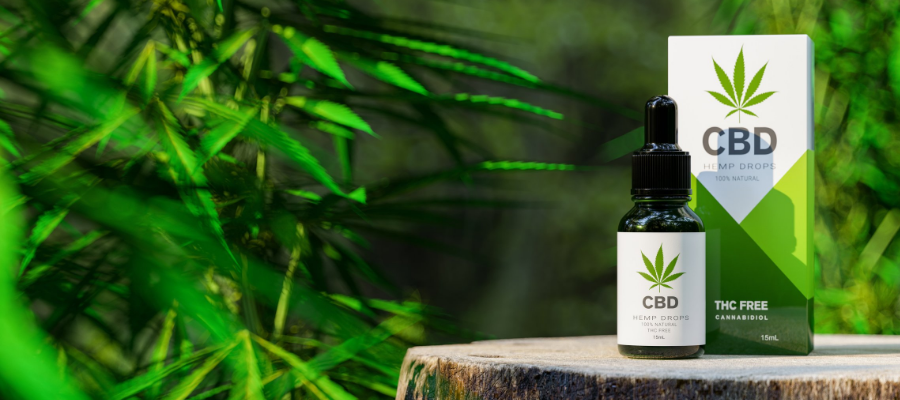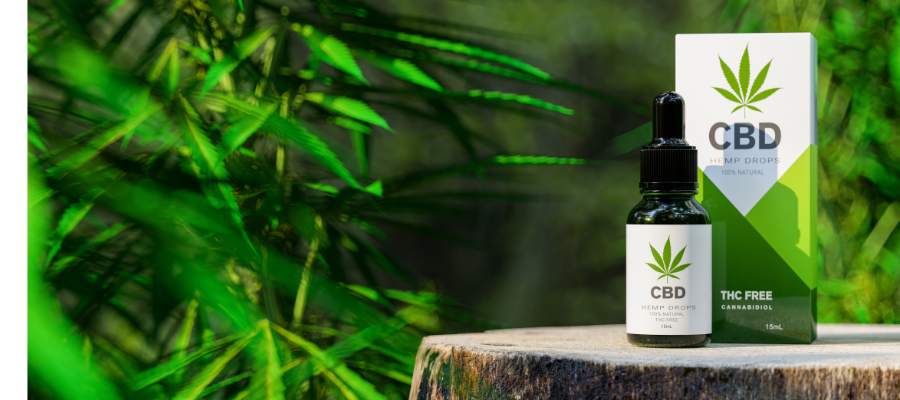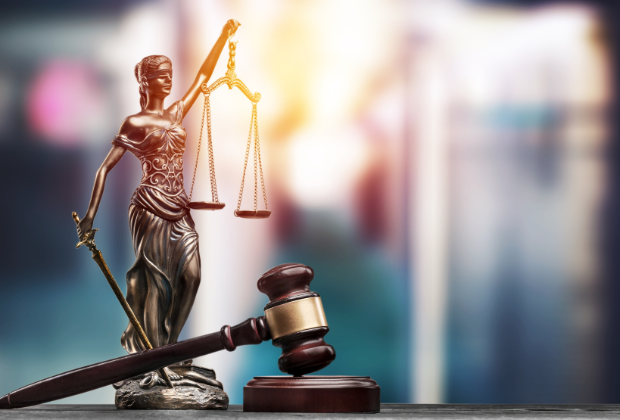
2019 ushered in a new age for the hemp and cannabidiol industries. The Agricultural Improvement of 2018 (Farm Bill) removed hemp from the Controlled Substances List, which legalized the growth of industrial hemp provided the requirements within the Act are met. As a result of this legislation, cannabidiol (CBD) has been introduced to the cosmetic market where it has begun to appear in skin care, shampoo, and other personal care products.
CBD is derived from the hemp plant, a variety of the same Cannabis sativa plant that produces marijuana. Hemp and CBD can contain relatively low levels of the psychoactive substance tetrahydrocannabinol (THC) but conventional wisdom considers them safe for topical use, particularly if the Farm bill mandated 0.3 maximum THC content limit is met. However, very few studies have been done to validate CBD efficacy as a cosmetic ingredient and so the regulatory landscape remains uncertain. The FDA published both a series of warning letters, and separately, it’s views and concerns about cannabis derivatives.
Despite the Pandora’s box of concerns, CBD is being branded as the next big thing for the cosmetic industry. The global market for CBD skin care is forecasted to reach $1.7 billion by 2025 thanks to the consumers hungry for plant-based wellness and beauty products. As a result, many cosmetic and personal care brands are basing their marketing and product development strategies on CBD products and transforming this well-known but little understood substance into the key industry driver for the foreseeable future.
CBD in Cosmetics – Will the Trend Continue?
The humble hemp seed has long been a staple of natural beauty products, appearing in mass-market skin care products since the 1970s. But it’s upstart cousin CBD is suspected of having even greater anti-oxidizing, anti-inflammatory and oil-balancing properties and as a result is attracting a tremendous amount of attention from the cosmetic industry regardless of whether formal clinical substantiation exists or not for these benefits.
CBD does sound like a wonder substance, if the hype is to be believed, and can therefore be an easy entry point for cosmetic brands looking to enter the sustainable, natural and plant-based beauty markets. It is also promoted as a drug-free antidote to stress and anxiety, another boon for manufacturers looking to cash in on the booming holistic, whole-body wellness trend although again this has yet to be clinically proven.
It is unlikely that this trend will slow down any time soon. Key retailers CVS and Walgreens announced in April 2019 that they would start offering non-ingestible CBD products for topical use. The FDA has not endorsed cannabidiol as generally recognized as safe (GRAS) in food or as a dietary supplement. Thus CBD and similar hemp derivatives are not allowed to be used in food or dietary supplements in the United States. It cannot be promoted as a medical treatment or cure, unless a new drug application is approved. There is no federal regulation to date limiting the use of CBD in cosmetics, assuming the material being sourced complies with the 2018 Farm Bill and it meets all other regulations pertaining to cosmetics. As a result, CBD has become the go-to ingredient for almost every type of cosmetic product, despite little solid evidence to support the miraculous claims made about its benefits.
To Regulate or Not to Regulate
The FDA is currently undecided about the efficacy of CBD and has expressed concerns about the risks associated with long-term use. Although the industry is full of anecdotal claims about the benefits of cannabidiol, there is very little substantive data supporting its use and limited information on how long-term cannabidiol use can affect the body. The FDA has posted an information forum and FAQs to inform consumers of the potential health risks of using CBD and the lack of controlled study data supporting the growing list of stated benefits, but these potential risks may or may not be more applicable to ingestion than topical application.
The FDA has been keeping a keen eye on manufacturers of ingestible CBD products who are making curative medical claims about their CBD products, which is illegal under the Food, Drug and Cosmetic Act. And while hemp seed oil and CBD oil are similar, they are not the same substance, and some companies are using the terms interchangeably, misleading consumers and opening themselves and their products to closer scrutiny by regulators.
However, the agency has publicly acknowledged the consumer interest in CBD oil as a green and natural beauty product ingredient, and regulatory focus has yet to impact the use of CBD by the cosmetic industry. The FDA guidelines define cosmetics as any product applied to the body for the purposes of cleansing or beautification, and there are no limitations on the use of cannabis or cannabis-derived
ingredients at this time, except for those that prove to be harmful with use. The agency does keep a weather eye on manufacturers who play fast and loose with concentrations, promoting a product as having a level of CBD that it just does not have, which is considered misbranding under the FD&C Act.
The regulatory landscape surrounding the use of cannabidiol is not much clearer in Europe. The European Cosmetic Regulation No 1223/2009 prohibits the use of cannabis and cannabis-derived extracts in cosmetics, but the directive does not specifically call out CBD. As a result, the EC clarified the difference between synthetic and plant-based CBD and allowing use only of the synthetic or hemp-derived CBD.
In both the US and EU, individual states have implemented their own CBD standards but are looking to the national agencies to issue more definitive clarification on the acceptable uses of cannabidiol in order to streamline business for this new and fast-growing segment of the cosmetic industry.
Currently, CBD is not allowed in Cosmetics in Canada.Tetrahydrocannabinol; delta-9-tetrahydrocannabinol; Cannabidiol; Cannabinol; Cannabis Sativa Flower Extract; Cannabis Sativa Flower/Leaf/Stem Extract are prohibited in Cosmetics. Cannabis sativa seed oil; Hemp seed oil; Hydrolyzed Hemp seed protein are allowed if they follow guidelines and contain less the .0010% THC. The Cannabis Act as amended October 17, 2019 specifies other uses of marijuana and derivatives.
Various states of the United States of America have regulations affecting the use of these products. Growers and producers of derivatives require licenses, the Farm Bill allowance of hemp derived products are not incorporated into laws of Idaho, and Nebraska, and there is still uncertainty as to CBD status in South Dakota. California recently listed THC as a developmental toxic substance, without a safe harbor level (no effect) listed. This could affect the use of CBD and other derivatives with any THC present.
What This Means for CBD in Cosmetics
The CBD cosmetic market remains an open market, as long as the Farm act and State regulations are followed. Otherwise, CBD is treated as any other cosmetic ingredients, many of which do have certain restrictions. Consumers need to be aware of vagaries surrounding the use of CBD in personal care products and should thoroughly research a brand and product before making a purchase decision. Going forward, cosmetic manufacturers, regulators and potentially legislators will need to reach a consensus regarding definitions, efficacy, dosages and provenance if the cosmetic market is to continue to ride the CBD wave to projected success.







